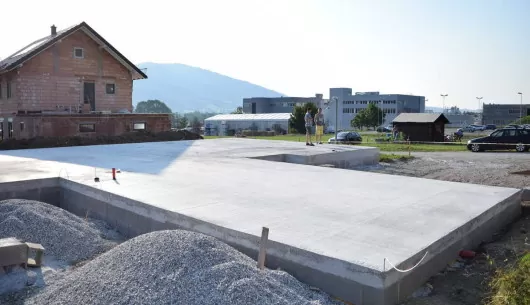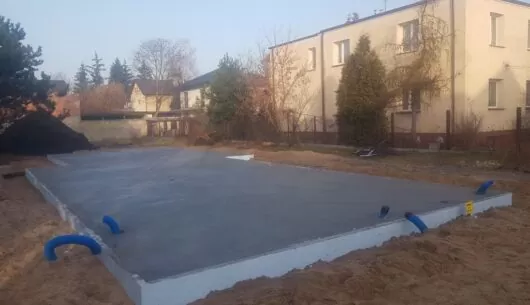Foundation slabs

The foundation is the least visible part of the building, but no less important than the structure itself. For our ready-made prefabricated houses , it is possible to prepare both a traditional foundation, as well as a foundation slab, which is increasingly used due to the many advantages of it. The construction of foundations is created according to the same principles as for buildings in traditional technology. However, we would like to point out that when building prefabricated houses, we place special emphasis on the extraordinary care of the foundation slab, due to the fact that it must be as highly energy-efficient as the building itself and they form an integral whole. By choosing such a solution, we gain the foundation and floor of the first floor of the building, which can also be equipped with heating, which saves the effort of additional installation of traditional underfloor heating.
Foundation slabs – execution for wooden houses:

In Western countries, the foundation slab is commonly used for houses with a wooden structure. In the case of buildings without basements, the foundation slab is a particularly good solution, as it allows for a significant reduction in earthworks. It does not require – as in the case of traditional foundations – to make deep excavations – in this case it is enough to remove the layer of humus and non-load-bearing layers of the soil. If, after removing the humus, non-blasted soils (e.g. sands) are discovered, the so-called lean concrete can be poured on the ground immediately. On the other hand, if there are blasted soils (clays, loams) under the plant soil, a layer of compacted sand, gravel, crushed stone should be laid first, or on the edges to the depth of freezing of the ground, the so-called “groynes” of lean concrete are made, and finally a primer. The next, last step is to place the reinforcement and concrete the slab. The foundation slab can have a different structure (thickness, degree of reinforcement, concrete class). It depends not only on the type of soil, but also on the loads that fall on it, as well as on the geometry of the building.
Advantages of the foundation slab:
- The short cycle of the slab production accelerates the construction of the building (a great advantage, especially in the case of modern methods of erecting e.g. prefabricated houses).
- It is perfect for soils with low load-bearing capacity, heterogeneous, prone to subsidence, or with a high groundwater level, or in areas of mining damage.
- The load of the building is distributed over a much larger area than in the case of foundations in the traditional way.
- Lower cost compared to a traditional foundation (when founded on non-blasted soils).
Types of foundation slabs used for our structures:
- Standard
- Energy efficient
- Energy-efficient heating
- Passive
- Passive heating
- Prefabricated foundation slab